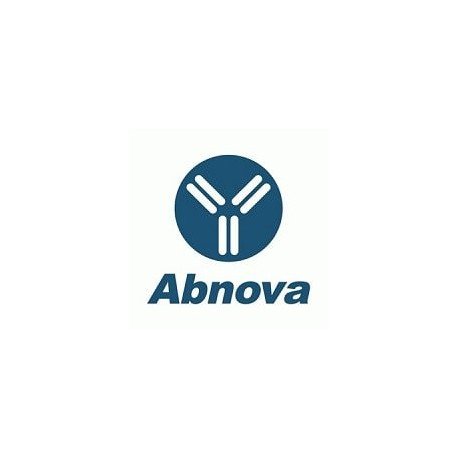Cart 0 Product Products (empty)
No products
To be determined Shipping
0,00 € Total
Prices are tax excluded
Product successfully added to your shopping cart
Quantity
Total
There are 0 items in your cart. There is 1 item in your cart.
Total products (tax excl.)
Total shipping (tax excl.) To be determined
Total (tax excl.)
Data sheet of VEGFA polyclonal antibody
| Brand | Abnova |
| Product type | Primary antibodies |
| Reactivity | Human,Mouse,Rat |
| Host species | Rabbit |
| Applications | WB-Ti,IHC-P |
More info about VEGFA polyclonal antibody
| Brand: | Abnova |
| Reference: | PAB12284 |
| Product name: | VEGFA polyclonal antibody |
| Product description: | Rabbit polyclonal antibody raised against synthetic peptide of VEGFA. |
| Isotype: | IgG |
| Gene id: | 7422 |
| Gene name: | VEGFA |
| Gene alias: | MGC70609|VEGF|VEGF-A|VPF |
| Gene description: | vascular endothelial growth factor A |
| Genbank accession: | BC065522 |
| Immunogen: | A synthetic peptide corresponding to amino acids at N-terminus of human VEGFA. |
| Protein accession: | AAH65522 |
| Form: | Lyophilized |
| Recommend dilutions: | Western Blot (0.5-1 ug/mL) Immunohistochemistry (Formalin/PFA-fixed paraffin-embedded sections) (1-2 ug/mL) The optimal working dilution should be determined by the end user. |
| Storage buffer: | Lyophilized from 0.9 mg NaCl, 0.2 mg Na2HPO4 (5 mg BSA, 0.05 mg sodium azide, 0.05 mg Thimerosal) |
| Storage instruction: | Store at -20°C on dry atmosphere. After reconstitution with 200 uL of deionized water and concentration will be 500 ug/mL, store at -20°C or lower. Aliquot to avoid repeated freezing and thawing. |
| Note: | This product contains sodium azide and thimerosal: POISONOUS AND HAZARDOUS SUBSTANCE which should be handled by trained staff only. |
| Product type: | Primary antibodies |
| Host species: | Rabbit |
| Antigen species / target species: | Human |
| Specificity: | Identical to the related rat sequence. |
| Reactivity: | Human,Mouse,Rat |
| Application image: |  |
| Application image note: | Immunohistochemical staining of VEGFA on formalin fixed, paraffin embedded human esophageal squamous cell carcinoma (ESCC) in cytoplasm DAB chromogenic reaction. Using VEGFA polyclonal antibody (Cat # PAB12284). |
| Applications: | WB-Ti,IHC-P |
| Shipping condition: | Dry Ice |
| Publications: | VEGF regulates haematopoietic stem cell survival by an internal autocrine loop mechanism.Gerber HP, Malik AK, Solar GP, Sherman D, Liang XH, Meng G, Hong K, Marsters JC, Ferrara N. Nature. 2002 Jun 27;417(6892):954-8. |


